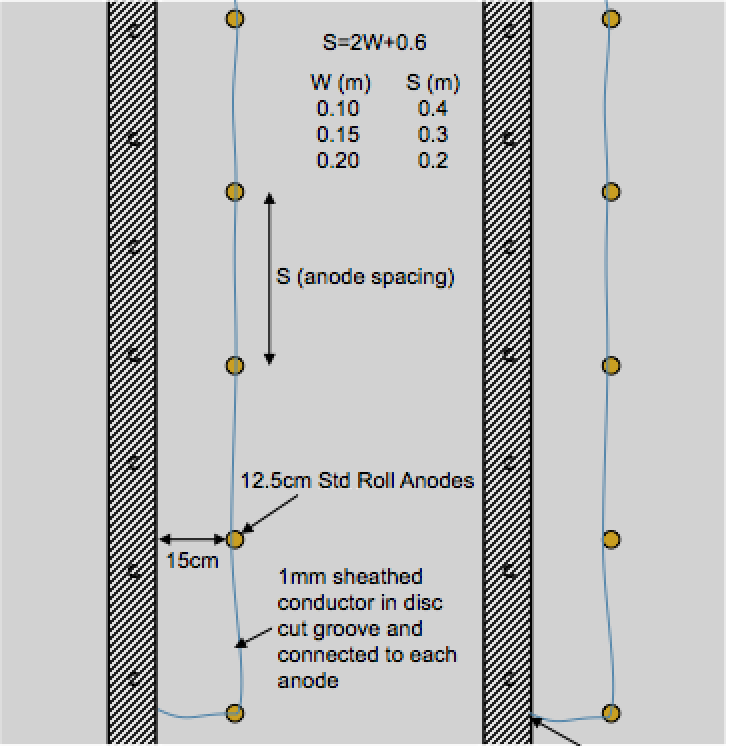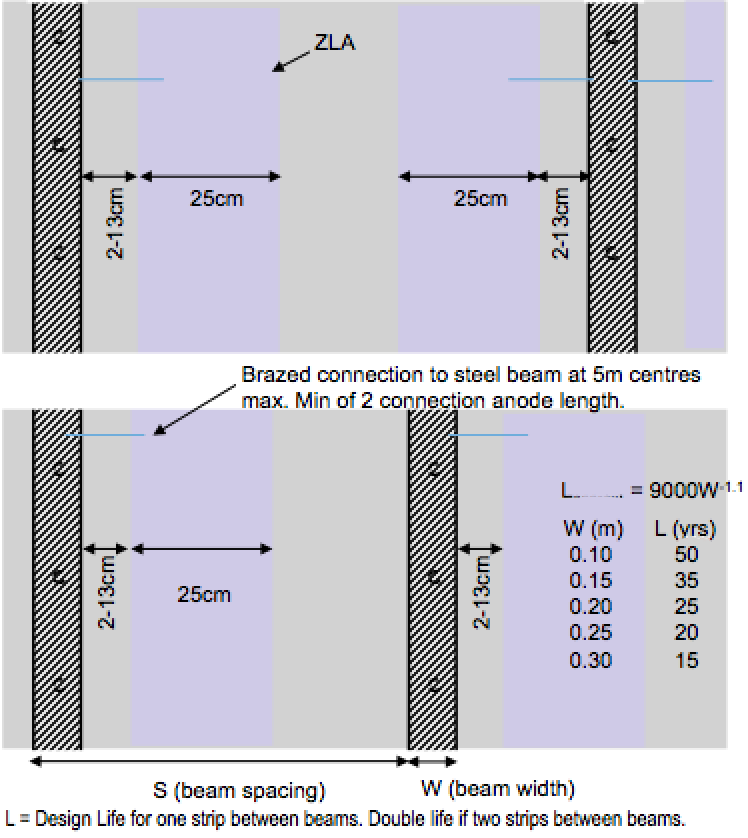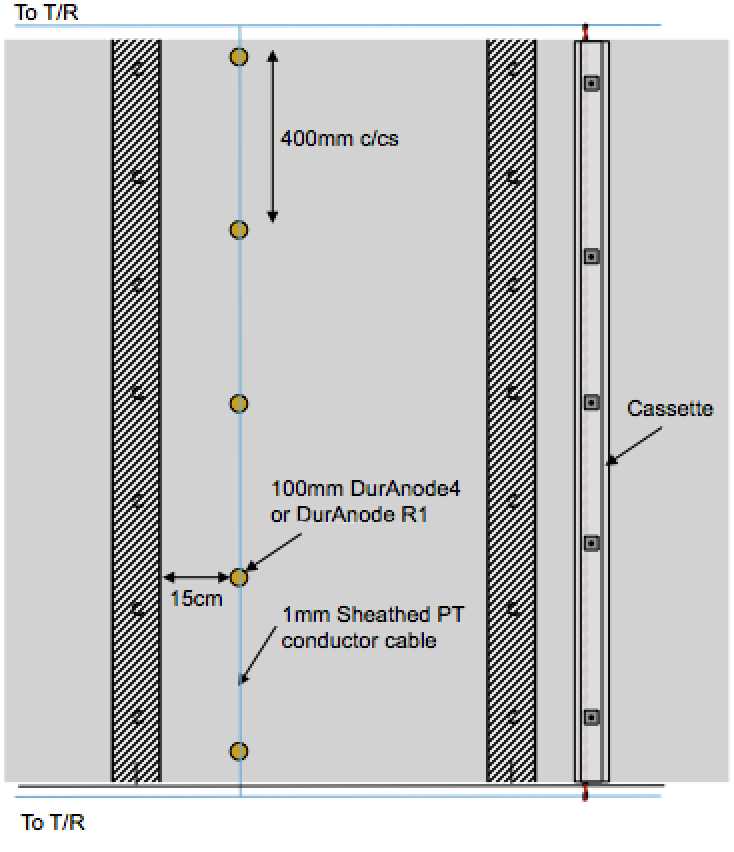Beams
Cathodic protection works by providing sufficient current to polarise the at risk steel so that the electrical potential drops so that it what is called in the ‘immune zone’ and will not corrode. Galvanic anodes do that due the naturally low potential of zinc in the electrolyte surrounding the zinc. Impressed current anodes do it by the applied current from the power source.
In both cases a uniform spread of current over the steel surface in contact with concrete is organised by the anode layout.
Galvanic anodes are consumed in the protection process and have a life limited by the mass of zinc. Impressed current anodes have very very low consumption of the active surface due to the special metals used.
However, they require a transformer/rectifier control system and wiring that makes them more complex and they have a higher maintenance requirement. Hence the most appropriate system will be project specific.
Corrpre lead the world in the development of their zinc activation paste that coats the active zinc surface and hence their anodes can achieve high polarisation of the steel surface in contact with the concrete.
The specific arrangement of anodes will depend on the project. Roll anodes could be inserted in the deck surface above each beam or into the soffit adjacent to each beam as shown in the sketch to the right.
The number of anodes required to achieve a given life varies depending on the beam width (steel surface area).
A 20-25 year design life is typically assumed for a repair. Alternatively Zinc Layer Anode (ZLA) could be applied as a strip between the beams or in the same fashion as the magnetite floor protection method above the beam.
Roll Anodes can be used to protect the as shown in the figure to the right .
Zinc Layer Anode can also be used by applying it to the soffit between beams. As beams get further apart the ratio of steel surface to anode surface remains the same so the design life remain constant.
As the beam width increases for the same beam spacing the area of steel to be protected increases but the zinc mass remains the same. Hence design life decreases with increasing beam width.
If the design life is less than that required then 2 strips of ZLA can be applied between each beam and this will double the life. If the beam width exceeds 150mm it is preferable to protect the beam from both sides and if the beam spacing is over 51cm this will require the use of 2 strips of ZLA between each beam. Design lives in excess of 25 years can not be relied on.
Various of the impressed current systems could be used for protection on large projects or projects where a life in excess of 25 years is required. DurAnodes require only a 12mm diameter hole and are the most effective internal impressed current anode because of the various design features.
However if aesthetics is not a high priority, and that’s like to be the case in this type of construction, then the lowest cost, fastest installation and lowest noise is likely to come from the Cassette system as it is applied by bolting to the concrete surface.
The DurAnode system can also be applied to the top of the slab, even in trafficked areas, to protect the underlying beams and this may be an advantage.
The anodes and wiring are located below the concrete surface so the system is largely invisible making it very attractive where aesthetics are concerned.
View looking up at slab

View looking up at slab

View looking up at slab


